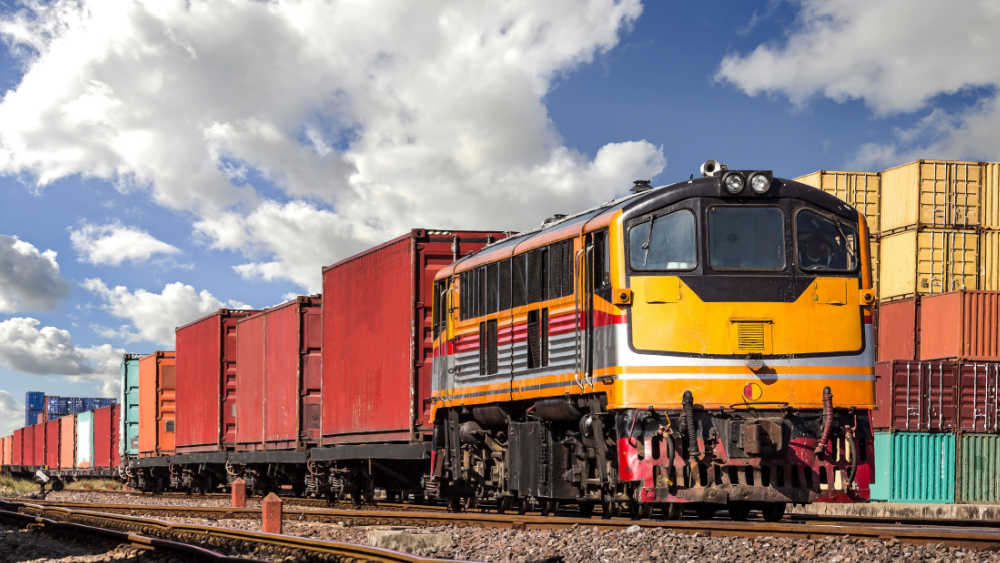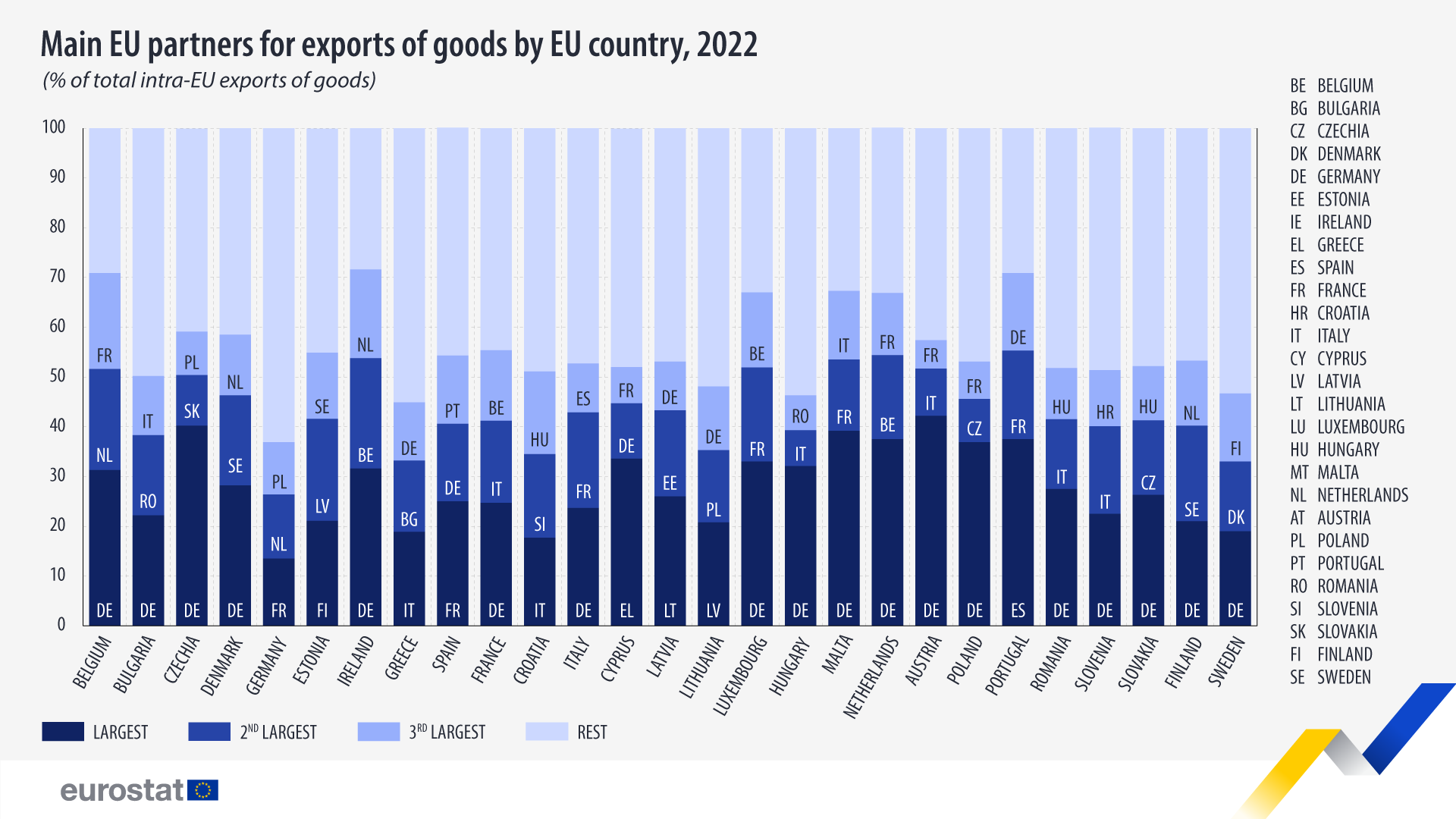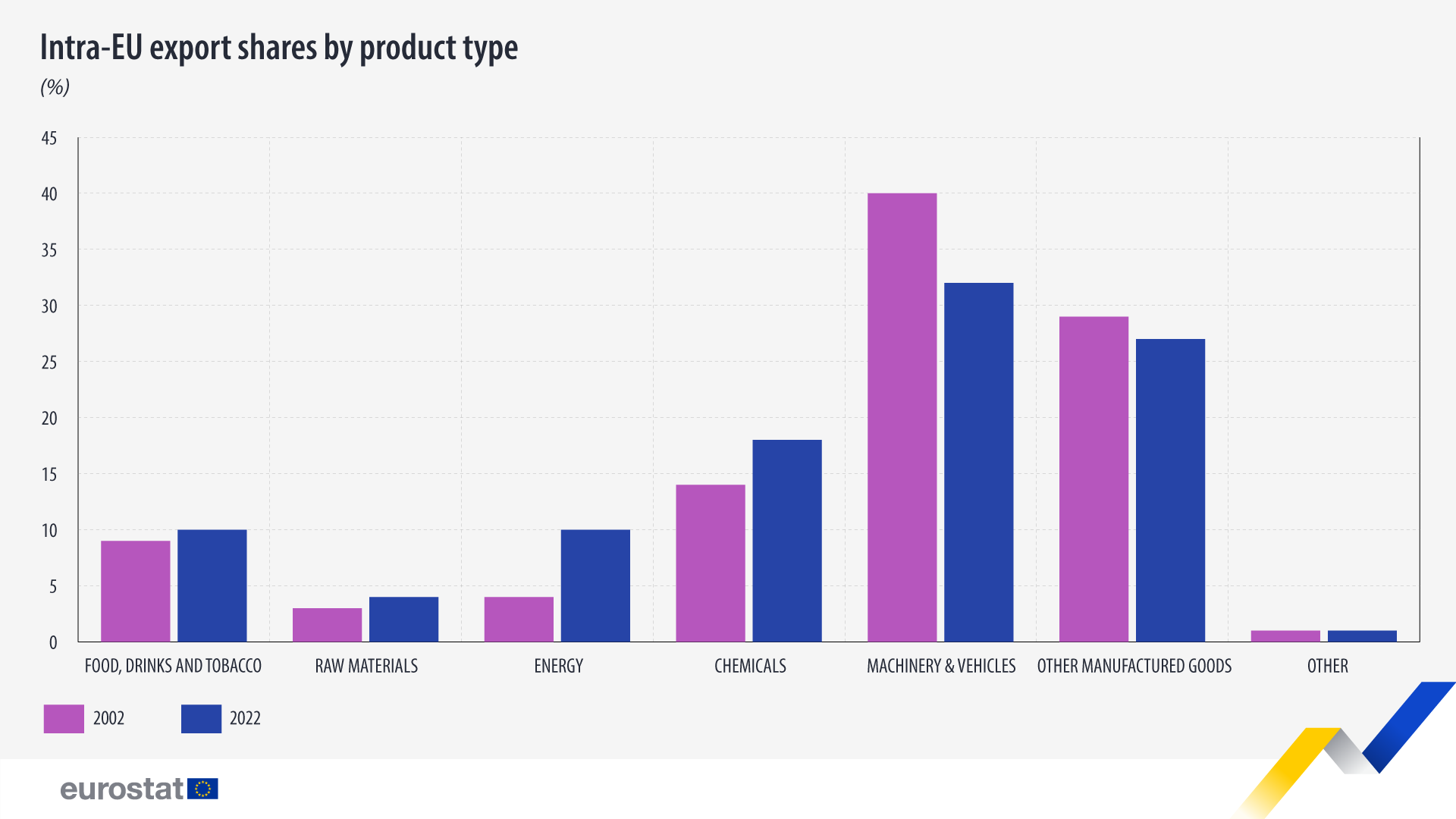Intra-EU trade 2022: top partners & export shares

In 2022, for 21 EU countries, their top three partners made up more than half of their total intra-EU exports.
For five of the remaining EU countries, their top three partners represented between 40% and 50% of their exports within the EU: Bulgaria (50%), Lithuania (48%), Sweden (47%), Hungary (46%) and Greece (45%). Germany (37%) was the only exception, with a share of under 40%.
Source dataset: DS-018995
The three EU countries that most frequently ranked as top three intra-EU export partners were Germany (24 times), followed by France (11 times) and Italy (9 times).
Largest increases for exports of energy and chemicals
Over the past two decades, the largest increases in intra-EU export shares were reported for ‘Energy’ products (+6 percentage points, or pp, in 2022 compared with 2002) and for ‘Chemicals’ (+4 pp), but these rises can be largely attributed to price effects.
The smallest growth in shares were for ‘Food, drinks and tobacco’ and ‘Raw materials’ (both +1 pp).
Source dataset: DS-018995
Conversely, export shares decreased for ‘Machinery & vehicles’ (-8 pp), ‘Other manufactured goods’ (-3 pp), and the ‘Other goods’ category (-1 pp).
For more information
- Statistics Explained article on intra-EU trade in goods
- Thematic section on international trade in goods
- Database on international trade in goods
Methodological notes:
- The main categories of the Standard international trade classification (SITC) are used for this article. They are as follows:
- food, drinks and tobacco (Sections 0 and 1 - including live animals);
- raw materials (Sections 2 and 4);
- energy products (Section 3);
- chemicals (Section 5);
- machinery and transport equipment (Section 7);
- other manufactured goods (Sections 6 and 8);
- other goods (Section 9).
If you have any queries, please visit our contact us page.


